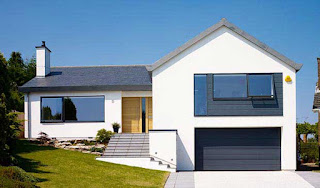How to repair damaged brick
The exterior walls of a house serve as the first line of defense for our homes. They keep the building standing and strong, but they also keep the elements out of your home and keep it safe. They also keep the interiors of the wall warm and comfortable when properly constructed and maintained regularly. It is critical to perform repair work and maintain your brickwork. Repair of this exterior should be at the top of your maintenance to-do list. Serious flaws can develop if they are ignored. The main problem or concern is that when the brick or stone of the wall becomes harder and tough, the protective layer has blown away, in this way the softer inner body of the wall will be exposed and vulnerable to further deterioration.
Step by step guide:
- It's good to cut away and replace crumbling brick or stonework using a piece of sharp cold chisel equipment where it has crumbled badly. Take the expert advice from render repair. A perfect treatment should be apply in which you can shallow recess around 20mm deep is cut out of the damaged face or layer, which is then filled with a small matching section of brick and mortar in place.
- If there has been extensive damage, walls may need to be partially rebuilt with matching brick or stone. It is a fairly common requirement for old disintegrating parapet walls at roof level, projecting on either side to divert rainwater away from the wall.
- A small amount of clear sealant can be applied to protect the soft exposed core, but generally prefer the alternative method of patching with lime mortar, To achieve a desired a reasonable match, you can coloured with brick or stone dust.
- If you have any Previous repairs to old walls using cement, modern paints, and/or excessive use of sealants Wherever possible, lime mortar and/or breathable paints should be used in their place.
How to deal with Damp wall
There are many reasons for damp walls. Damp in old houses, in one form or another, is not uncommon.
Following are the reason:
- unpleasant, damp odors
2Internal plasterwork and blistering emulsion
3wallpaper that is peeling
4Walls with white salt stains
5black mold on the walls
Dampness isn't always as simple to identify or repair as you might think. It depends on the wall that is exposed to the elements should be the first consideration. Get expert advice from bathroom rendering Sydney. Wind and rain can penetrate solid walls with badly eroded mortar joints. There are various factors that affect the wall for example if you have leaking gutter, elevated ground levels, hard surface splashes, or traffic spray. The first step is to address any water sources, such as leaks from gutters or pipe work. Eroded grooves can be recut, and decaying cills can be replaced. To overcome the dampness caused by condensation, humid air must be expelled through extractor fans installed in rooms where the most water vapor is generated, such as bathrooms, kitchens, and cloakrooms. Damp is basically problematic at lower levels of walls.




Comments
Post a Comment